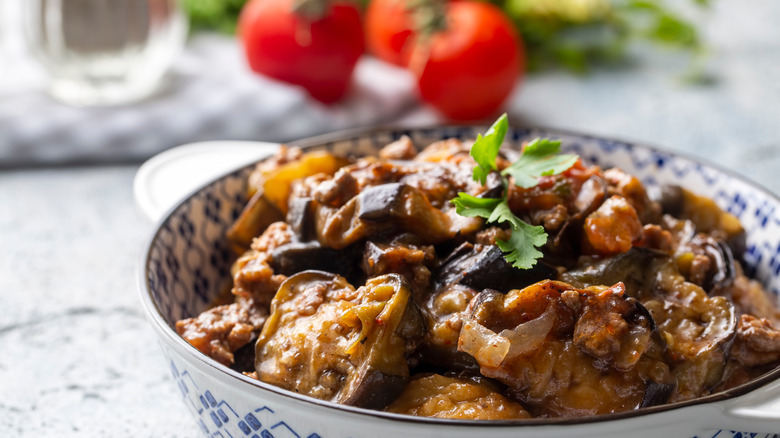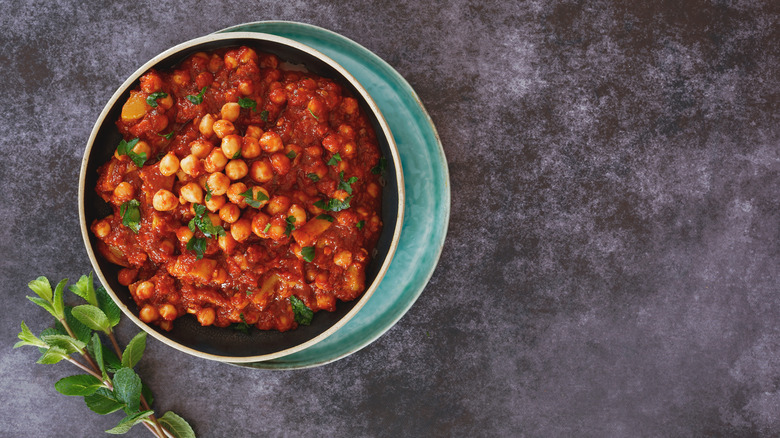The Medieval Origins Of Moussaka
People across Europe and the Middle East have been chowing down on moussaka — a comforting eggplant dish that typically includes ground meat, potatoes, and spices — for longer than any of us have been alive. Moussaka fans in the U.S. are most likely familiar with the popular Greek version, which made its way to America in the 1920s by way of the legendary Greek chef and cookbook author Nikolaos Tselementes, says Greek Reporter. Widely referred to as the "father" of modern Greek cooking, his name is as ubiquitous among Greek home cooks as Julia Child's is in the U.S.
Tselementes' version finishes off the shepherd's pie-like casserole with a French-inspired béchamel sauce that bubbles into a burnished, crispy top. Other versions, including one from The New York Times, swap out Gruyere for the harder, saltier kefalotyri.
While Greek moussaka may get the most attention, it's by no means the only version of the dish. In fact, moussaka's original incarnation dates all the way back to medieval times, says Culture Trip. It probably didn't look anything like a shepherd's pie back then, and there was certainly no béchamel involved.
Evidence points to a medieval Arabic cookbook
The precise origins of moussaka are still debated, but many believe that the medieval Arabic book, "A Baghdad Cookery Book" houses the dish's first known recipe, says Culture Trip. This evidence lines up with records of Arabs' popularization of the eggplant, which was first discovered in China and India, according to Harvesting History.
Per Dishes: Origins, Turkish moussaka made its way to the English-speaking world through a translation of Turabi Efendi's "Turkish Cookery Book," an 1862 adaptation of the 1844 book "Cooks' Refuge". It was this version that found Nikolaos Tselementes, serving as a canvas for his decidedly Western European take on the dish. Though it features similar ingredients, Turkish moussaka is more like a stew, instead of looking like a layered casserole covered in cheese. Bites of Beri calls for ground beef and eggplant or potatoes bathed in a tomato-y, "slightly spicy" red pepper sauce.
The many shapes, sizes, and flavors of moussaka
In his recipe for Turkish moussaka (or musakka), Istanbul-based food blogger Vidar Bergum notes that "there are probably as many ways to prepare the Turkish version of moussaka as there are (home) cooks in Turkey." In Bergum's version, he stresses the importance of high-quality tomato paste and oil. He also adds Turkish hot red pepper paste and Aleppo pepper, as well as mild Turkish green and red peppers.
If you don't eat meat, you should turn to Lebanese moussaka. This version is entirely vegan, featuring chickpeas instead of beef or lamb, and doesn't include cheese. Hungry Paprikas has a recipe that notes the dish's original name, Maghmour.
It's useful to know the history and cultural context behind the food we eat, but don't let that stop you from enjoying a slice of European-style moussaka if you're a fan. Likewise, why not use your newfound knowledge of moussaka's ancient history by trying it in its original form, and all the other variations that have cropped up since?


